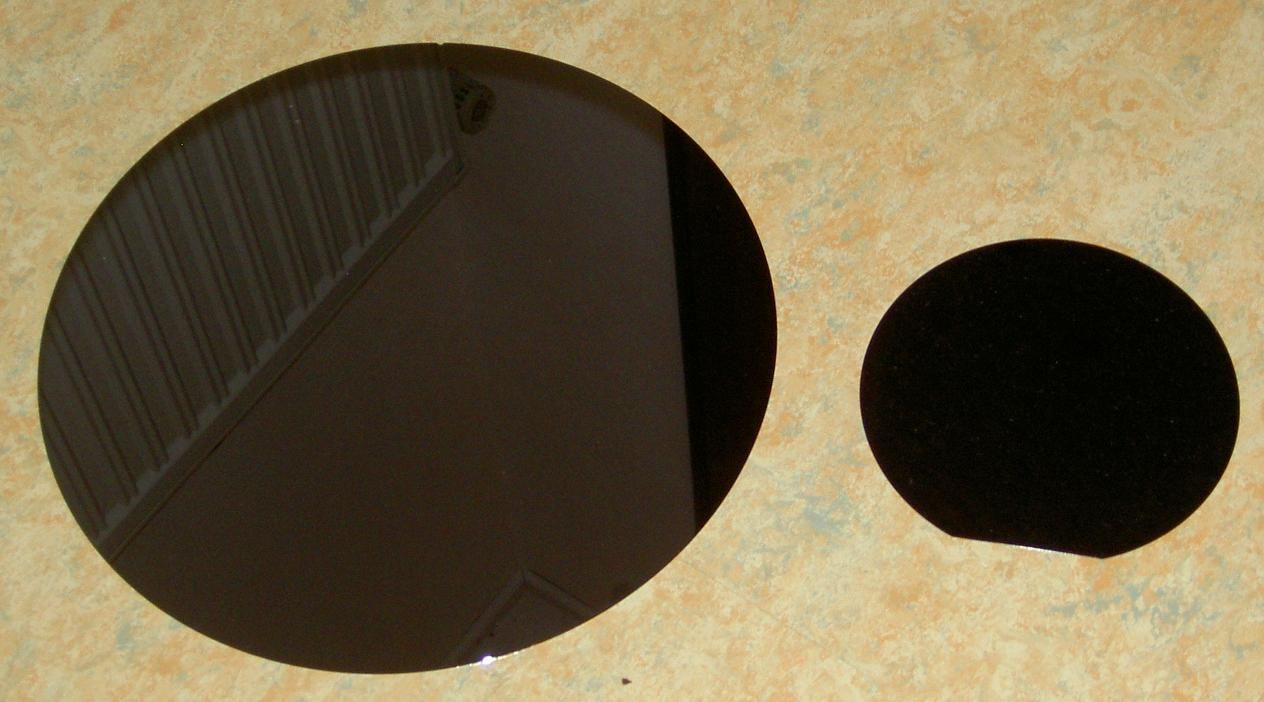If you're into PC building and overclocking, you might have come across the term "silicon lottery."
Simply put, the term silicon lottery refers to the inherent differences between two processors of the same product line. These differences affect overclocking performance.
Let's dive into this a bit more and see why no two processors are the same.
How Are CPUs Made?
CPU manufacturers like Intel and AMD don't actually make the CPUs. They design them. Companies like TSMC implement these designs on silicon wafers to make chips.
Silicon wafers are big silicon disks. A semi-conductor manufacturer prints transistors on these wafers according to the designs of CPU makers. After printing the design, the wafer is cut to get separate hardware chips.
Not every inch of a wafer can be used to form chips. During the production of the wafers, defects spread along the surface of the silicon disk, an unwanted side effect of the fabrication process. Because of these defects, manufacturers get around 70% to 90% yield.
A thing to note here is that no matter the classification of a processor, all processors are manufactured from the same silicon wafers. For instance, a low-end dual-core Intel Core i3 and a mid-range quad-core i5 processor are made from the same wafer. It is only after the cutting phase that CPU makers classify different chips according to their performance.
So, if there are defects in a Core i5, Intel may decide to sell it as an i3 with the defective cores disabled. This process of repurposing the CPUs because of inherent defects is called Binning.
Binning can go both ways. Where manufacturers can categorize worse-performing processors into lower-tier products, they can also sell CPUs performing better-than-expected as separate products. A good example of this is the Intel K series. K series CPUs are identical to non-K parts except for one difference: they can achieve higher clock speeds.
Each CPU Has Different Overclocking Potential
After cutting the wafer, CPU makers test chips to make sure they have satisfactory performance. Chips that perform worse than expected are binned out into lower-end products, and better chips are packaged as high-performance parts. Among many factors, the relative placement of a chip on the wafer can determine a CPU’s performance proCPU's
On a silicon wafer, chips that are printed closer to the center have fewer defects. In other words, they are of better quality than the chips on the edges of the wafer. In addition, the chips from the center often have better thermal performance and clock speeds, resulting in a lot of overclocking headroom.
Put simply, processors that are fabricated from the center of the wafer overlock the best. For instance, one Core i9-10900K processor may overclock to 5GHz, while another may never go past 4.5GHz. And because we have no way of knowing which CPUs overclock better, if you end up with a better one, you will win the “silicon lottery.”
No two processors are the same, even when they belong to the same line of products. Through unforeseeable circumstances, CPUs with the same specifications are inherently different from one another.
Better CPU Cooling Is Also Very Important
Don’t sweat about the silicon lottery. There are other ways to get good overclocking perfDon'tce out of your CPU. One of the most effective is a worthy cooling solution.
Along with the chip quality, thermal performance is the limiting factor in overclocking. With a good enough cooling system, you can achieve clock speeds north of 5GHz. For instance, enthusiasts have managed to overclock CPUs to 7GHz by using liquid nitrogen.
So, invest in a good cooling setup, and your CPU will overclock like a champ.



